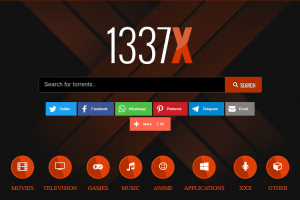Disruptive technology is the type of innovation that transforms the way industries are run that are usually at the bottom of the market and eventually replacing the other established players. This is a notion that gained popularity in the 1990s by Harvard professor Clayton Christensen and is the way we have begun to think about the evolution of business in the modern world. Since smartphones transformed the way, we communicate and streaming services have threatened the very existence of the traditional media, disruptive technologies open new prospects and destabilize the established ones.
This article will discuss the essence of disruptive technology, its historical background, its practical applications and its overall effects on society and the economy. We will also examine how companies can make changes to cope with these changes and what may happen in future. Through the knowledge of disruptive technology, you will be in a better position to find your way more in a world where innovation is never still.
What is Disruptive Technology?
The term “Disruptive Innovation”, popularized by a professor at Harvard Business School, Clayton Christensen, is a very specific process. This is not just a breakthrough that will help with good products. In fact, disruptive technology usually establishes itself in one of two areas:
- In the lower end of an existing market: It aims at customers who are overserviced by the existing products which are often costly and are satisfied with a lower end, simple, good enough option.
- In an entirely new market: It develops a new value network, where the customers are those who have never consumed the product as the current one was either not available or unaffordable.
The mainstream market performance metrics tend to initially dismiss the disruptive product or service because it is perceived to be inferior. It has one benefit, however–it is usually less complicated, more convenient, or less expensive. This foothold is then constantly enhanced until it finally catches up to the mainstream market, ousting the older players.
Key Features of Disruptive Technology
So just what is truly disruptive about technology? It is not about newness and advancement. These are the following characteristic features:
- Starts Small: The disruptive innovations would typically focus on a niche market or underserved customers that have yet to be served by the incumbents.
- Cheaper or Frugal: They have effective performance at a fraction of the cost and are attractive to low-end users.
- Scalability: As time goes by these technologies develop faster, and thus they are able to compete in more upscale markets.
- Market Transformation: They do not merely make improvements to the current products; they transform whole industries and form new value networks.
- Unexpected Impact: Although they are not taken seriously by established companies in the beginning, they discover that they will be overtaken in the future.
These features assist in differentiating disruptive technology and sustaining innovations, which do not change the market landscape and improve the existing products.
Disruptive vs. Sustaining Innovation: A Critical Distinction
One of the pitfalls is to declare any emerging and exciting technology as disruption. In his theory of the innovation process, Christensen says that sustaining innovations are the majority.
- Maintaining Innovations: These enhance the functionality of already existing products in the dimensions where mainstream customers have always prized them. They are either evolutionary (e.g. fuel injections, which replace carburetors) or even radical (e.g., the first costly automobiles in the late 19th century), but they still work within the current market and value system.
- Disruptive Innovations: These come with an alternate package of features, usually inferior performance on standard market, however, having advantages such as ease and low cost. They make their own way, and in due course outwit the market, undercut it or bypass it.
Key differences between disruptive and sustaining innovation:
| Feature | Sustaining Innovation | Disruptive Innovation |
|---|---|---|
| Target Market | Mainstream, high-end customers | Low-end or new-market footholds |
| Initial Performance | Better than current offerings, as judged by mainstream metrics | Worse initially, but “good enough” for a segment |
| Business Model | Often similar to the incumbent’s model | Requires a fundamentally different business model |
| Trajectory | Competes within the existing market | Creating a new value network and moves upmarket |
| Impact on Incumbents | Defends against competitors | Initially ignored as unprofitable, then becomes a major threat |
Benefits of Disruptive Technology
Disruptive technology introduces game changing benefits that transform industries, economies and daily living. It has more than a simple incremental improvement effect, and its benefits include:
Increased Efficiency and Productivity
Disruptive technologies can enable businesses to work with shorter turnaround times and lower costs by automating processes, reducing the amount of manual intervention in operations, and making their operations smoother. Artificial intelligence, machine learning and robotics use tools enable businesses to concentrate more on innovation rather than on routine.
Enhanced Accessibility
Most disruptive innovations enable products and services to be more affordable and available to many people. An example of this is cloud computing, which saves the cost of costly infrastructure, and mobile applications that are used to access financial, educational, and healthcare services to remote or underserved communities.
Encouragement of Innovation
New ideas, business models and market opportunities are frequently created by disruptive technologies. Whether startup companies or existing firms, both will be encouraged to reevaluate their tactics, which would result in radical solutions that could otherwise be unavailable under the traditional method.
Improved Customer Experience
Disruptive technologies make customer engagements more significant with personalization, accelerated delivery, and smarter services. Businesses can serve individual preferences better, whether it is predictive analytics, virtual assistant, or on-demand platforms.
Global Connectivity and Collaboration
International collaboration is encouraged by technologies such as the Internet of Things (IoT), cloud services, and high-tech communication platforms. This connectivity allows businesses and individuals to collaborate easily despite whereabouts enhancing international trade and innovation.
Sustainable Growth
Most disruptive innovations help in sustainability by minimizing resource consumption, waste, and carbon footprints. As an example, renewable energy technologies and smart grids are changing the way that societies consume and control energy.
Understanding Disruptive Technology’s Core Effects
Fundamentally, disruptive technology involves the introduction of innovations that will make products or services more accessible, less expensive, or efficient and are usually targeted at underserved markets before spreading. This change does not merely adjust the systems in place but transforms them. As an example, it may result in the emergence of completely new markets and the obsolescence of old ones.
Key impacts include:
- Economic Growth and Efficiency: Disruptive tech lowers costs and increases productivity through the automation of processes. An example is the cloud computing, which enables companies to scale without massive investment in infrastructure saving billions in industries.
- Market Creation and Destruction: The new technologies create new industries, such as the gig economy created by ride-sharing apps, but they also destroy old ones and old jobs.
- Consumer Empowerment: Mobile applications and other tools enable consumers to have control, such as personalized shopping of products and on-demand services.
- Connecting the World: The innovations will bridge the gap between the distant areas, making e-commerce possible in less developed countries and promoting inclusive development.
Nonetheless, such changes are associated with such challenges as ethical issues pertaining to the privacy of data and the digital divide.
Positive Impacts: Driving Innovation and Growth
Technology is disruptive, which is why it drives growth because competition is encouraged, and it opens up new opportunities.
- In the manufacturing industry, democratization of manufacturing has occurred because 3D printing can be used to prototype and customize products fast without having to build huge factories. This minimizes wastage and accelerates innovation processes causing products to develop at a greater pace.
- Artificial intelligence diagnostics and telemedicine in healthcare have facilitated access in particular in the case of global crises such as the pandemic. Wearables monitor health indicators in real-time, avert problems before they lead to serious results, and reduce expenses on the side of the providers. The result? Better patient outcomes and an improved system.
- Fintech disruptors such as digital payments and robot-advisors have made services cheaper and more accessible in the field of finance. Blockchain facilitates secure transactions that are free of intermediaries and reduces the cost of sending money across a border. This has given economic power to unbanked people in emerging economies, and it has triggered economic inclusion.
- Massive open online courses (MOOCs) also have the benefits of education since they provide flexible low-cost education to millions of people all over the world. The platforms such as Coursera have eliminated barriers such that anyone who has access to the internet can upskill.
Overall, these innovations promote the increase of GDP, and it is reported that disruptive innovations may contribute trillions to the global economy in the form of new value networks by 2030.
Negative Impacts: Challenges and Disruptions
While the positives are quite convincing, disruptive technology may also be turbulent.
- One of the issues is job displacement. Manufacturing and customer service are some of the areas that have witnessed layoffs due to automation in factories and AI in customer service. This necessitates reskilling initiatives to assist workers to change.
- The lack of access to new technology might increase inequality because not all people are equally able to access it in rural regions or among low-income populations. Privacy concerns also emerge, and technological advancements that consume a lot of data such as AI cause concern over surveillance and intrusions.
- Environmental effects vary. The emission reduction of the electric vehicles is offset by battery production which puts a strain on the resources. Lags in regulation may provide unequal regulation, which enables the development of monopolies.
- Streaming has eliminated traditional media in the entertainment industry causing layoffs in cable media companies and concentrating power in the hands of a few tech giants.
Industry-Specific Examples
Let’s break down how disruptive technology affects key sectors with concrete cases.
Transportation and Logistics
Ride-sharing apps like Uber disrupted taxis by offering app-based convenience and lower costs. Autonomous vehicles and drones are now transforming delivery, with companies like Amazon using AI for efficient routing. This cuts labor costs but raises safety and job loss concerns.
Retail and E-Commerce
Amazon’s e-commerce model upended brick-and-mortar stores with personalized recommendations and fast shipping. AR for virtual try-ons and AI chatbots enhance experience, but small retailers struggle to compete, leading to store closures.
Energy and Sustainability
Green tech like solar panels and energy storage batteries challenge fossil fuels. Tesla’s EVs have accelerated the shift to renewables, reducing carbon footprints but disrupting oil-dependent economies.
Media and Entertainment
Netflix’s streaming displaced DVD rentals and cable TV, offering on-demand content. Social media platforms have democratized content creation, but algorithms can spread misinformation.
Manufacturing and Supply Chains
IoT sensors and robotics optimize production lines, predicting maintenance to avoid downtime. However, this automates jobs, requiring workers to adapt to tech roles.
These examples show how disruption starts with accessibility and scales to dominance.
Conclusion
Disruptive technology continues to redefine our world, from humble beginnings to global dominance. By understanding its mechanics, examples, and implications, individuals and organizations can better prepare for change. While it brings challenges, its potential for progress is immense. Staying informed and adaptable is the best way to thrive in this dynamic landscape.


